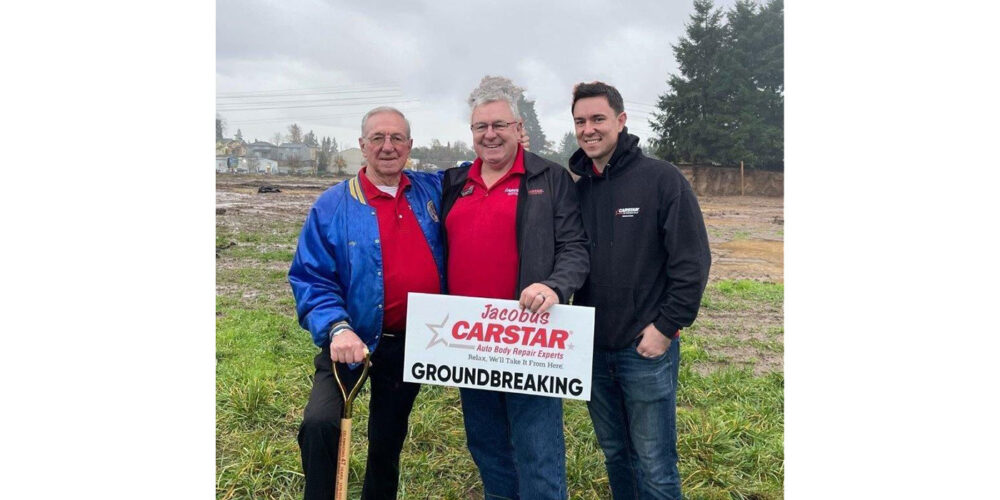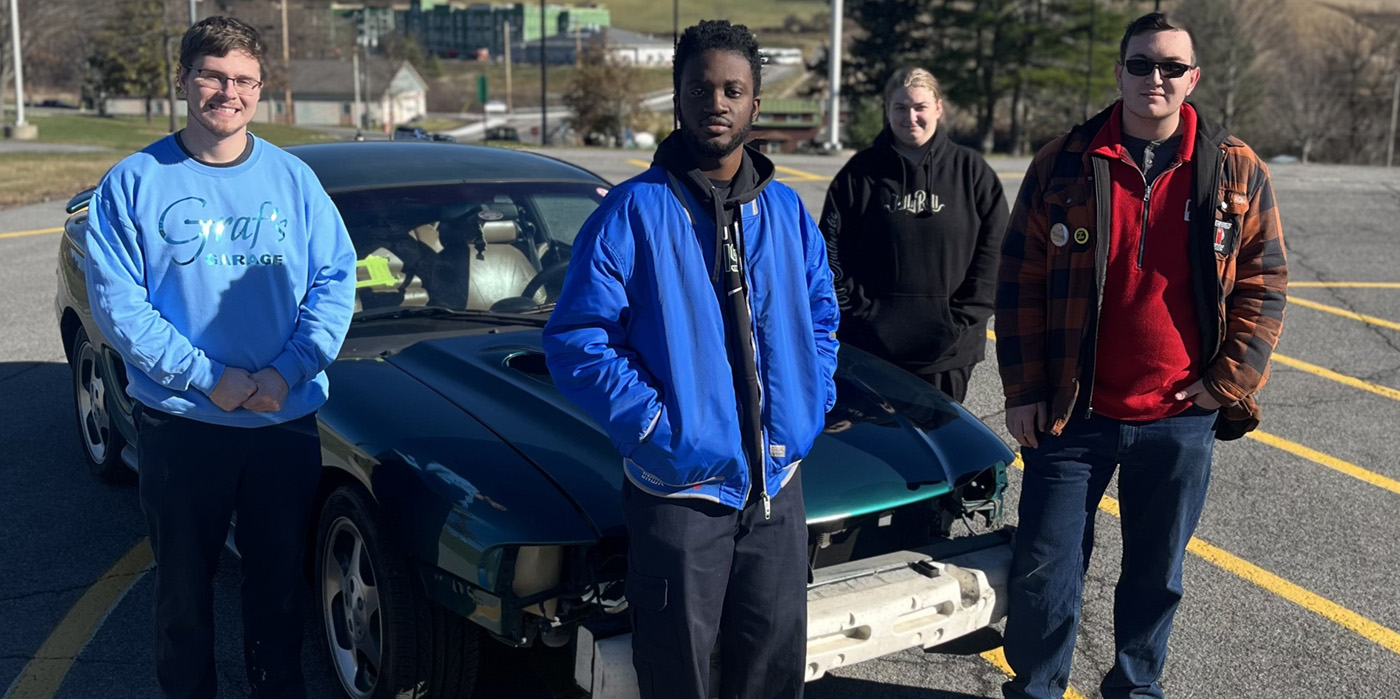United AutoMax in Memphis, Tenn., is part of United Auto Group, the second largest dealership chain in the country. While the mainstay of United AutoMax is operating successful dealerships, the company purchased a small, Memphis collision repair facility in 1997. But they weren’t sure what to do with it.
“We called the old facility the one-horse body shop,” says Kent Ritchey, market manager for United Auto Group. “It was a dilapidated, small facility with only one spraybooth. We knew we had to do something with it, but we didn’t know how to move forward. Should we close the shop, sell it or invest in a full-scale renovation to create a modern, state-of-the-art collision repair facility?”
A good question, and Ritchey found that he needed help to answer it.
Whether your shop is 3,000 square feet – or 30,000 square feet – sometimes what you need is an outside point of view to make your operations more efficient. Even the best managers and owners could use a little assistance now and then with questions regarding workflow, expansion plans and renovations, to name a few. But where can they turn for help?
Enter the age of collision repair design services (CRDS).
Many consultants and companies within the collision industry offer layout and design programs to customers for a nominal fee. A typical CRDS team consists of trained professionals in architecture, workflow patterns and overall business philosophies within the collision repair field. They assist in crosschecking your operations and provide tips to improve your productivity and efficiency. The overall goal? To make your business more profitable. And that’s a goal everyone can live with.
The First Step: Analyze This
To help with the decision, Ritchey and his management team did their homework and requested the help of a CRDS.
The design team completed a thorough analysis of the facility, paying special attention to the goals that United AutoMax had for the future of the shop. Ritchey explained to the team that while they expected the facility to repair traditional crash and dent work, the shop would also service the used vehicles sold among United Auto Group’s seven local dealerships. This could amount to nearly 1,000 cars each month.
The first step in any CRDS process is to conduct a thorough assessment of the facility and its operations. The size of the business doesn’t matter. The smallest body shops to the largest consolidators and dealerships in every organization can use education in this area.
Analyzing the operations of the business gives the CRDS team the ability to better understand and accurately assess the needs of the facility – and not simply from an equipment perspective. The team looks at every facet of the business, from the moment a customer pulls into the driveway to the final buffing stage in the detailing area.
“The best advice I can offer in the initial phase of a CRDS analysis is to be completely open. This isn’t the time to be shy,” says an experienced shop design manager. “Open your books and provide extremely detailed information on every aspect of your facility. Let us know your needs – where you are today, and where you want to grow. [You won’t get] solid recommendations if you aren’t honest about your operations.”
How long does an assessment take? Well, it all depends on the type of shop. A 5,000-square-foot shop will take less time to analyze than a large dealership. It also varies depending on the repairs being offered compared to what they plan to offer in the renovated facility. An analysis can take anywhere from a few hours to a few days. Sometimes it can even be done over the phone.
Although it’s best not to rush through the process, this can be difficult since a lot of facilities so look forward to opening a new place or expanding their current one that they hurry to get things moving. It’s really best to find time to ask as many questions as you can and to take your time.
The initial analysis typically consists of a thorough questionnaire regarding your current facility, as well as future goals for your business. Questions may involve:
- Requirements of the facility and site;
- Status of existing equipment, as well as future purchases;
- Number of employees and office personnel;
- Types of vehicles repaired;
- Financial information on your facility’s profits and losses;
- Demographics of your shop’s location;
- Current market penetration;
- Mix of DRP vs. non-DRP repairs; and
- Typical customer base.
The design team will also want to be made aware of any outside influences that affect your facility. These influences include the economy of your shop’s local market and other profit centers within your facility.
In addition to the facility analysis, an important part of any CRDS questionnaire includes a thorough review of the business operations. This includes a breakdown of sales, including gross profit margins on items such as mechanical labor, frame labor, parts, materials, etc. Other operational items to review include shop rates for paint labor and mechanical labor, as well as a breakdown of productive labor. You do this by looking at your current number of employees in addition to your future number of employees.
The Second Step: Where Do We Go from Here?
Once you complete the questionnaire, the design team will thoroughly review the information to provide recommendations for improvements to your facility. These recommendations can include anything from improving the customer waiting area to completing an overhaul to the paint department.
“Every situation is unique, and we review each questionnaire on an individual basis,” says another CRDS manager. “There isn’t a blanket recommendation sheet that we present at the end of a project. That wouldn’t be helpful to anyone. Every recommendation we provide is specific to the needs of that particular facility.”
While many facilities have specific problems that need special attention, some common problems face body shops today. “Shops need to take a close look at market trends and new ideas to increase productivity,” says the design manager.
” ‘If it’s not broke, don’t fix it’ is not a good strategy. By stepping outside of the box, an outside perspective can open your eyes to many simple improvements.”
And keep in mind that several production methods can work in different facilities. For example, an in-line repair system is the traditional approach used in most shops. However, a system where parts are repaired and painted off of the vehicle – and then reassembled – can also be extremely efficient. (See “Off With the Parts” for more information.) Or perhaps the best method for your shop is a combination of both. The goal is to find the method that can improve your cycle time. Your business should be flexible enough to adapt to new methods and the future of the industry.
It’s the job of the design team to provide a thorough analysis of your facility and give recommendations for overall improvements. From there, it’s up to you – the shop owner or manager – to “walk the talk” and take action on the plan. Many shops have taken advantage of collision repair design services and have been pleased to realize dramatic increases in productivity and profitability.
After the analysis of the United AutoMax facility was completed, the design team recommended that it was worth the investment to create a new facility from what they had purchased. This didn’t come as a shock. Because the facility being analyzed was so old and dilapidated, United AutoMax knew it wasn’t sufficient for its huge workload. The building had only one spraybooth and the workflow pattern didn’t … well … flow. There was no way for the shop to grow if the recently purchased building was left the way it was. But because of the building’s location — so close to the dealership — United AutoMax really wanted to make something out of it, but would remodeling and expanding it be worth the time and money involved? The analysis said yes.
United AutoMax accepted the recommendation and opened a brand-new facility six months later in July 2000.
Converting the One-Horse Body Shop
The new United AutoMax collision center has a modern, state-of-the-art appearance, including an attractive customer service area. There’s ample room for employees, including a lunchroom, break room and locker/shower areas. The shop area boasts four prep stations, two downdraft spraybooths and room for a third spraybooth should the need arise. The metalworking department, which used to be a dark, drab area, is very clean and bright. It was designed and built to amplify light for the technicians. According to Ritchey, even the office area was properly designed, with computer ports in empty offices for insurance adjusters, and there’s even a parts boutique. All areas were built to code and meet local OSHA requirements.
Ritchey asserts the design team not only helped with equipment decisions and renovations, they also provided recommendations for the facility’s workflow. Whereas United AutoMax previously used three shifts of employees, they were able to pare their schedule down to one shift.
How? The shop expanded in floor space so there was enough room to hold, at one time, the number of techs it had previously taken three shifts to contain. The shop still had the same amount of workers, but the added space enabled them to all work at the same time, rather than across three shifts.
Last Step: Have Someone Walk in Your Shoes
You’ve hired the best people, you have the latest equipment available and your strategic plan is solid. So why aren’t you hitting your target numbers each month? Why does your shop appear full, yet your profits aren’t as high as they could be? If everything should be coming up roses, why are you hacking away at weeds?
As much as some shop owners would hate to admit it, another pair of eyes can help them see things in a whole new way. Having professionals look at your shop in an external way can give you a fresh perspective, since being immersed in day to day operations like most shop owners doesn’t give much opportunity to see the big picture. This is where a design team can help. It may not be for everyone, but it’s definitely for the shop that can’t figure out why their busy facilities aren’t generating as much cash flow as they’d expect.
So how did the renovations affect the bottom line of United AutoMax? “In just a short period of time, we tripled our business,” says Ritchey. “Volume increased. Gross profits increased. And material costs decreased. Overall, our bottom line profitability increased between 400 to 500 percent, which was exactly on target with the [team’s] projections. We plan to use the facility as a model when United Auto Group purchases other collision repair shops around the country.”
Writer Judy Lynch is manager of Design Services at Sherwin-Williams Automotive Finishes Corp.














